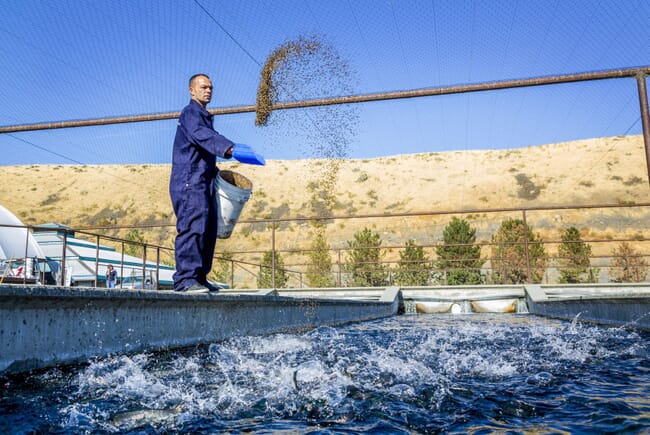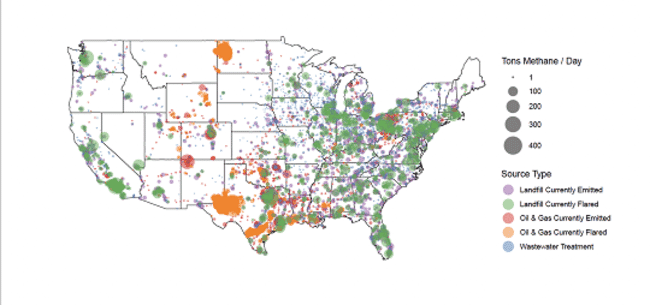A first-of-its-kind Stanford University analysis has evaluated the market potential of growing bacteria that have been fed captured methane, that can be processed into a protein-rich fishmeal.

The study, published in Nature Sustainability, finds production costs involving methane captured from certain sources in the US are lower than the market price for conventional fishmeal. It also highlights feasible cost reductions that could make the approach profitable using other methane sources and capable of meeting all global fishmeal demand.
“Industrial sources in the US are emitting a truly staggering amount of methane, which is uneconomical to capture and use with current applications,” said study lead author Sahar El Abbadi, who conducted the research as a graduate student in civil and environmental engineering.
“Our goal is to flip that paradigm, using biotechnology to create a high-value product,” added El Abbadi, who is now a lecturer in the Civic, Liberal and Global Education programme at Stanford.
Two problems, one solution
Although carbon dioxide is more abundant in the atmosphere, methane’s global warming potential is about 85 times as great over a 20-year period and at least 25 times as great a century after its release. Methane’s relative concentration has grown more than twice as fast as that of carbon dioxide since the beginning of the Industrial Revolution due in great part to human-driven emissions.
A potential solution lies in methane-consuming bacteria called methanotrophs. These bacteria can be grown in a chilled, water-filled bioreactor fed pressurized methane, oxygen and nutrients such as nitrogen, phosphorous and trace metals. The protein-rich biomass that results can be used as fishmeal in aquaculture feed, offsetting demand for conventional fishmeal or plant-based feeds.
While methane-fed methanotrophs can provide feed for farmed fish, the economics of the approach have been unclear, even as prices of conventional fishmeal have nearly tripled in real terms since 2000.
To clarify the approach’s potential to meet demand profitably, the Stanford researchers modelled scenarios in which methane is sourced from relatively large wastewater treatment plants, landfills, and oil and gas facilities, as well as natural gas purchased from the commercial natural gas grid. Their analysis looked at a range of variables, including the cost of electricity and labour availability.
Toward turning a profit
In the scenarios involving methane captured from landfills and oil and gas facilities, the analysis found methanotrophic fishmeal production costs – $1,546 and $1,531 per tonne, respectively – were lower than the 10-year average market price of $1,600.

For the scenario in which methane was captured from wastewater treatment plants, production costs were slightly higher – $1,645 per tonne – than the average market price of fishmeal. The scenario in which methane was purchased from the commercial grid led to the most expensive fishmeal production costs – $1,783 per tonne – due to the cost of purchasing natural gas.
For every scenario, electricity was the largest expense, accounting for over 45 percent of total cost on average. In states such as Mississippi and Texas with low electricity prices, production costs came down over 20 percent, making it possible to produce fishmeal from methane for $1,214 per tonne, or $386 less per tonne than conventional fishmeal production.
Electricity costs could be reduced further, the researchers say, by designing reactors that better transfer heat to require less cooling, and switching electric-powered applications to those powered by so-called stranded gas that would otherwise be wasted or unused, which can also reduce reliance on grid electricity for remote locations. In scenarios involving methane from wastewater treatment plants, the wastewater itself could be used to provide nitrogen and phosphorus, as well as cooling.
If efficiencies like these could bring down the production cost for a methanotroph-based fishmeal by 20 percent, the process could profitably supply total global demand for fishmeal with methane captured in the US alone, according to the study. Similarly, the process could replace soybean and animal feeds if further cost reductions were achieved.
“Despite decades of trying, the energy industry has had trouble finding a good use for stranded natural gas,” said study co-author Evan David Sherwin, a postdoctoral researcher in energy resources engineering at Stanford.
“Once we started looking at the energy and food systems together, it became clear that we could solve at least two longstanding problems at once.”




